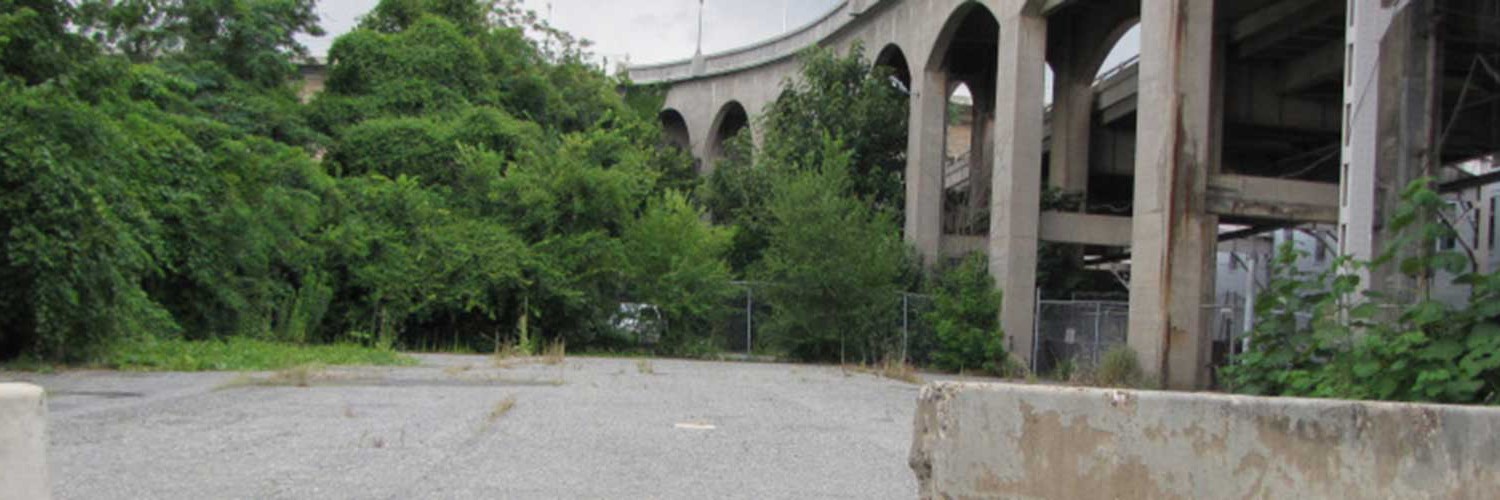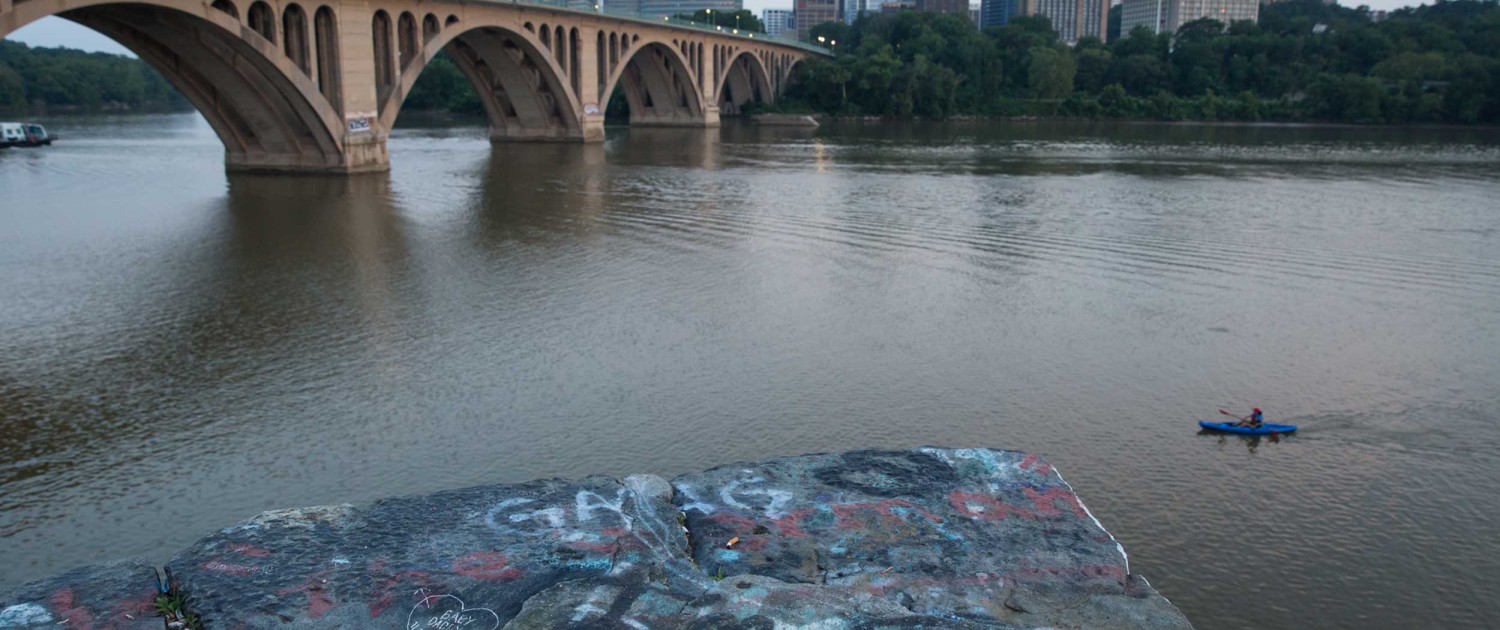History of the Park
Envisioning a Park on the River
For more than three decades, beginning in the late 1970s, Georgetown residents, community leaders, and activists worked tirelessly with local and federal government officials to transform the Potomac River waterfront in Georgetown from a gritty parking lot and a disused, forlorn industrial area into a verdant greenspace as a pleasure park and a place for respite in nature.
Recognizing this blighted waterfront land as a unique natural asset, Senator Charles Mathias of Maryland established a regional task force to develop a plan for the Georgetown waterfront that would combine a park with some development. Georgetown residents supported this plan.
Organizing to Create a Park
In 1978, Georgetown residents Judy Bonderman, Ann Satterthwaite, and Katharine Sullivan formed the Committee for Washington’s Riverfront Parks, the first community organization aimed at encouraging the National Park Service to create a national park on the Georgetown waterfront. Joined by activists Donald Shannon, a leader in the Citizens Association of Georgetown, and others, their efforts brought success. In 1979, the Park Service signed an agreement with the owner of the last privately-owned land on the Georgetown waterfront to provide public access to a 60-foot-wide strip of waterfront land at what eventually became the Washington Harbour development. The agreement also provided for creating a small park along the waterfront between 31st St. and Wisconsin Ave.
In the early 1980s, the District of Columbia urged the National Park Service to create a larger waterfront park in Georgetown by offering to transfer the 10-acres of waterfront land it had acquired for the inner-loop freeway project to the Park Service, in exchange for the Park Service’s promise to create a national park along the waterfront.
The land transfer agreement was signed in 1984, and in 1985 the National Park Service prepared a conceptual plan for the waterfront park. However, lacking funds to build the park, the Park Service never implemented the plan. Instead, the Park Service continued to use the waterfront land as a public parking lot, and allowed the District to continue to store trash trucks and road salt there.
In 1991, Georgetown attorney Max Berry and Ginger Laytham, of the Clyde’s Restaurant Group, formed a second organization, the Georgetown Waterfront Arts Commission, to broaden support for a national park on the Georgetown waterfront by holding occasional cultural events there. The Arts Commission maintained public interest in creating a park on the waterfront, but funds for park construction were still lacking.
In 1974, Georgetown civic leaders formed a third organization, the Georgetown Waterfront Park Commission, to advocate for a park. The new Commission was a coalition of volunteers and community organizations, led by Bill Cochran and Barbara Downs, former Presidents of the Citizens Association of Georgetown, with John Parsons representing the Park Service, and Senator Charles H. Percy, a Georgetown resident and long-time park supporter, chairing the commission.
The Georgetown Waterfront Park Commission raised some seed-money for the park from private sources and obtained matching funds from the federal government through the support of Bruce Babbitt, the Secretary of Interior. The Commission met monthly, advancing plans for creating the park, establishing policies for the park, and urging completion of the transfer of land for the park from the District of Columbia to the National Park Service. Working closely with the Commission, in 2001, the Park Service solicited proposals from nationally recognized landscape architects for the design of the park. The noted Philadelphia landscape design firm of Wallace, Roberts and Todd was selected to prepare a plan, with Ignatio Bunster-Uster the lead landscape architect for the project.
The design for Georgetown Waterfront Park called for a passive park. Initially, elements of the proposed design, referring to the historic industrial and port activity along the waterfront, aroused strong community objections as hard-edged and nontraditional in concept. Some alterations were made, and the final park design, featuring native plants, a natural bio-edge, rain gardens, a waterfront-promenade, river stairs, and an iconic fountain at the Wisconsin Ave. entrance to the park, garnered broad community support.
By 2005, the National Park Service had a detailed plan for the waterfront park, but did not have public funds to build it. Raising private funds to build a public park continued to prove challenging, and the Georgetown Waterfront Park Commission eventually disbanded.
Friends of Georgetown Waterfront Park Completes the Park
In late 2005, local activists Grace Bateman, Barbara Downs, Gretchen Ellsworth, Jonda McFarlane, and Ann Satterthwaite reignited the effort to raise funds to build the waterfront park. Joined by Roger Stone and Bob vom Eigen, this small all-volunteer group of residents, all having participated in the Georgetown Waterfront Park Commission, founded a fourth organization, Friends of Georgetown Waterfront Park (FOGWP). Corinne Bronfman, Steve Crimmins, Robin Gilbert and others joined the effort along the way.
FOGWP was incorporated as a non-profit in 2006, and the group signed a partnership agreement with the National Park Service, committing to advocate for the park and to complete the fundraising effort. To help close the fundraising gap, the Park Service suggested that the park be built in two phases. Over the next several years, FOGWP raised a substantial portion of the $22 million needed to build the park. With the support of Ward 2 D.C. Councilmember Jack Evans, the District of Columbia Government contributed $10 million for park construction, and private donors, including the Sen. Charles H. Percy and Sharon Percy Rockefeller families, also generously contributed to this effort. With these donations in hand, FOGWP was able to qualify for matching federal funds, under the National Park Service’s Centennial Challenge Grant Initiative, providing the final increment of funds needed to reach the $22 million fundraising goal.
Groundbreaking for Georgetown Waterfront Park was in July 2006. The first phase of the park, from Wisconsin Avenue, N.W. and 34th Street, N.W., opened in October 2008. The second phase, from Wisconsin Avenue, N.W. to Washington Harbour, opened in September 2011, with dedication of the entire park at that time.
Many of those who participated in the more than 30-year effort to build the park joined in the celebration marking the transition of the waterfront from an ugly and uninviting tract of land to the popular and appealing greenspace that is enjoyed by thousands of residents and visitors each year. FOGWP continues to work with the National Park Service to preserve and enhance Georgetown Waterfront Park, and to raise funds for this effort.




